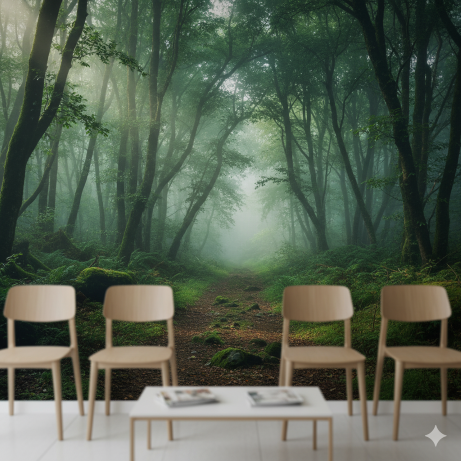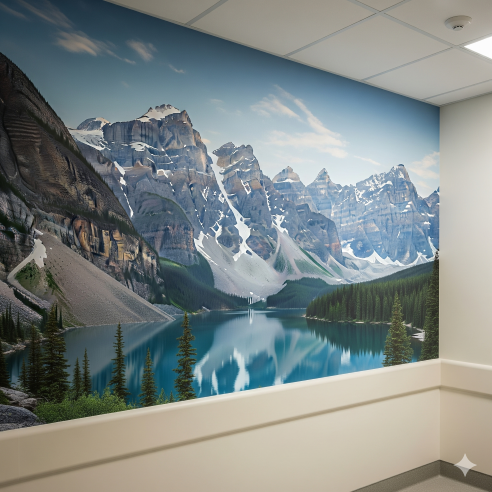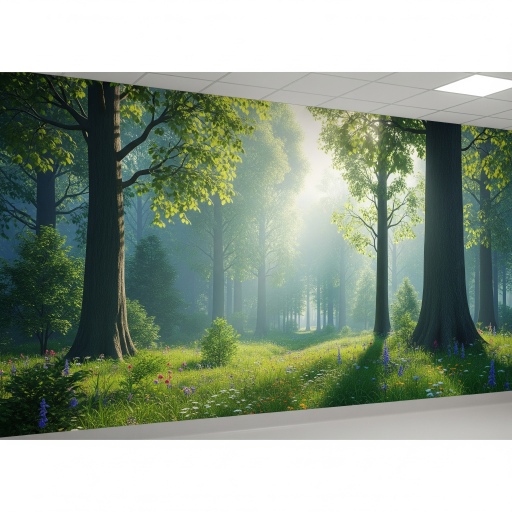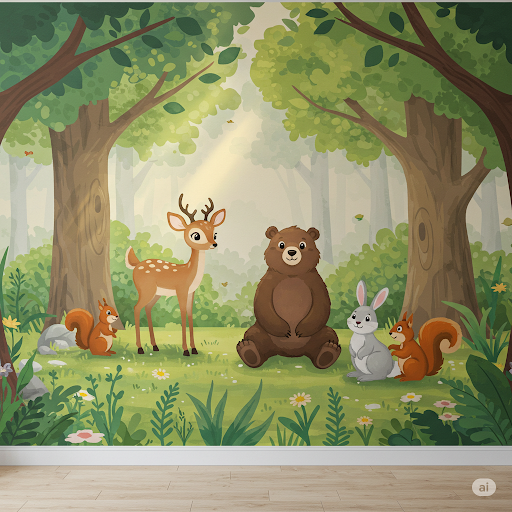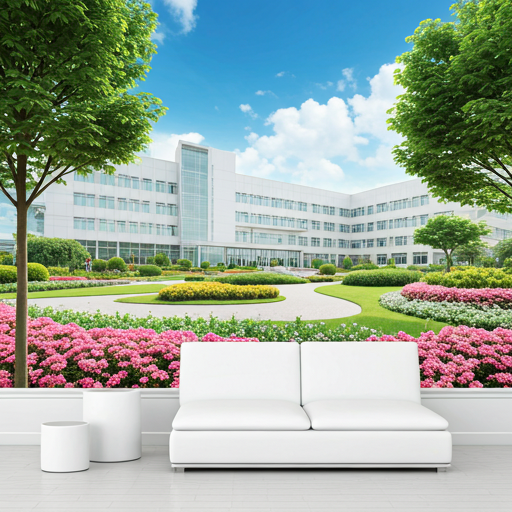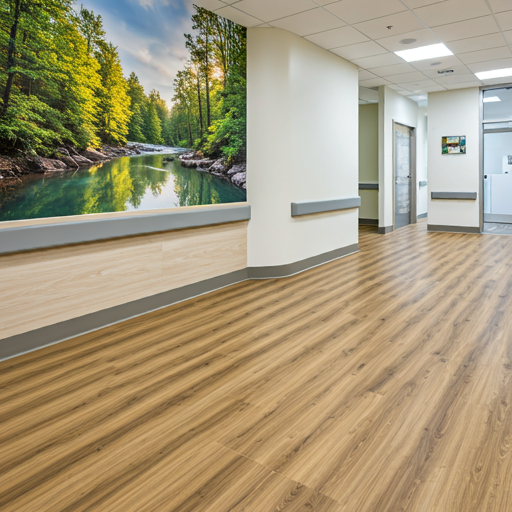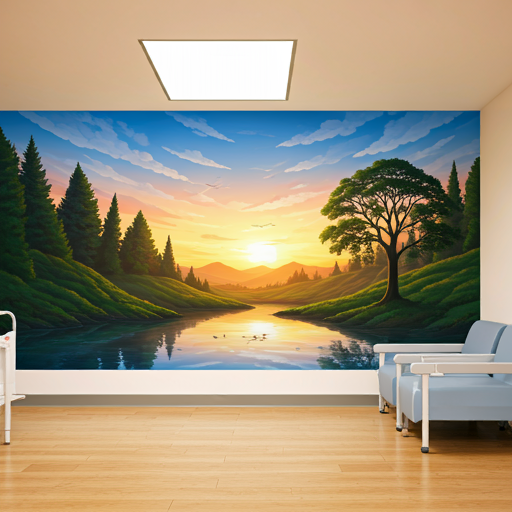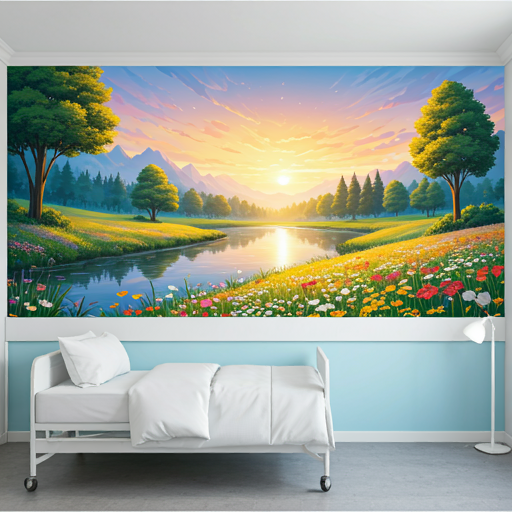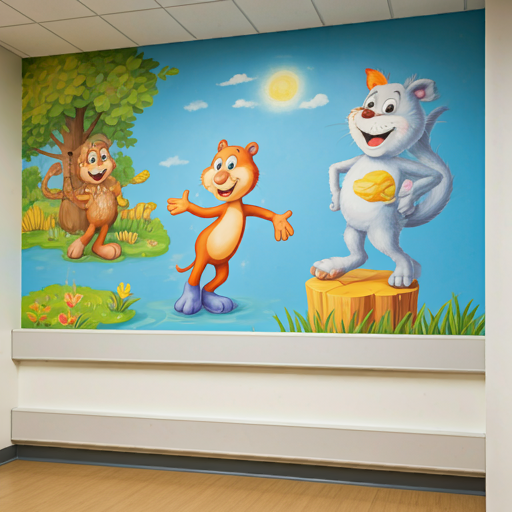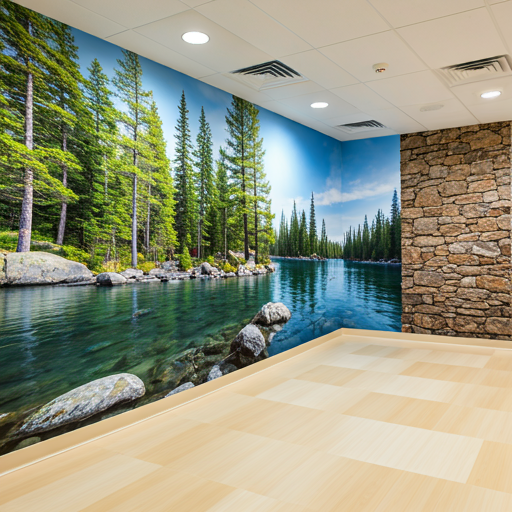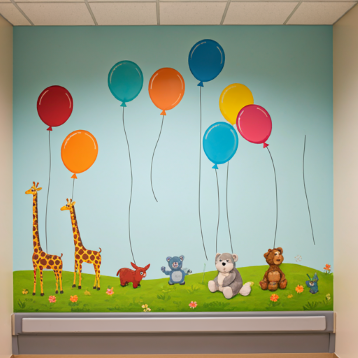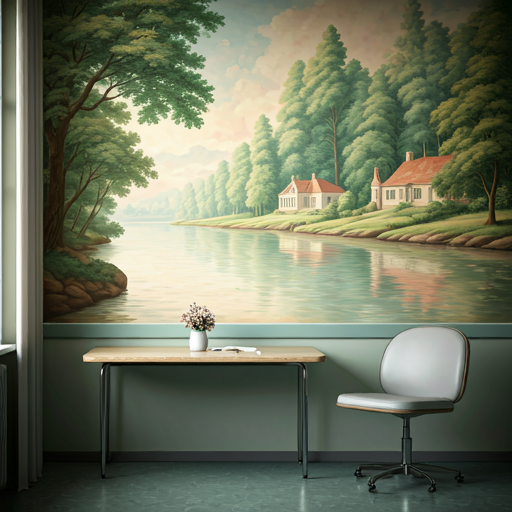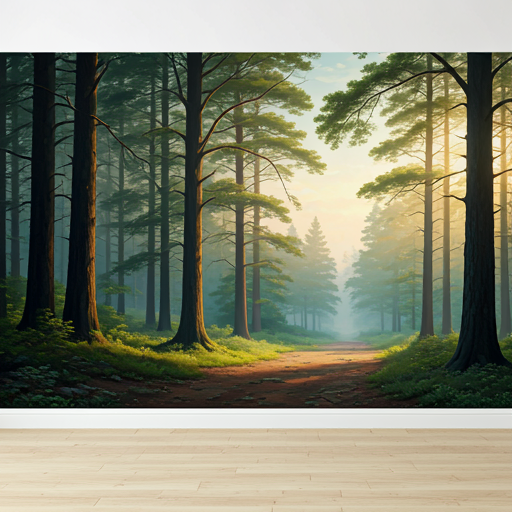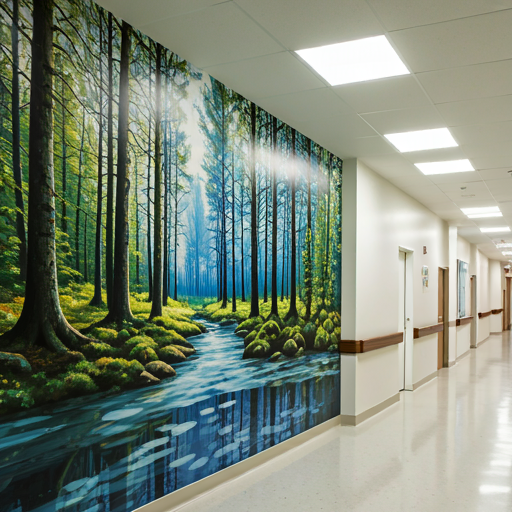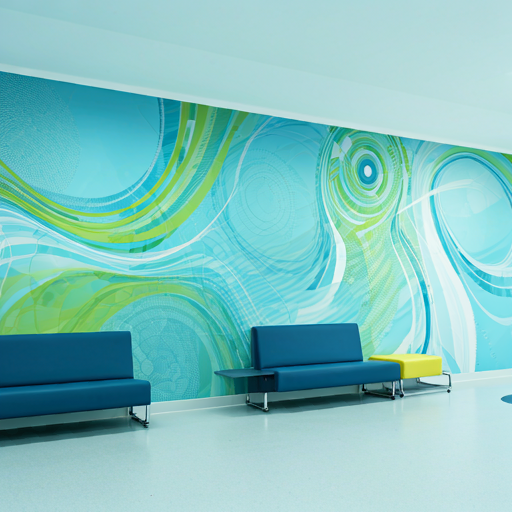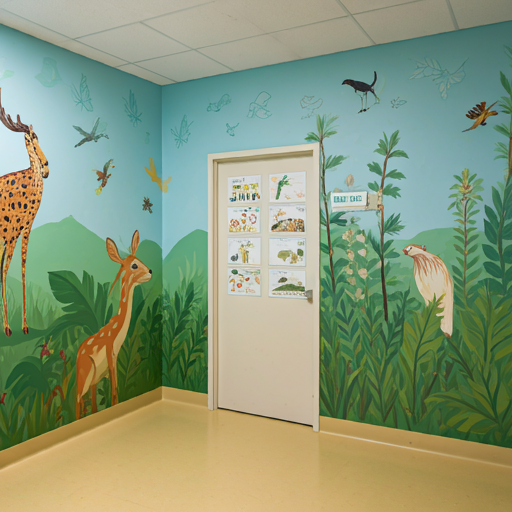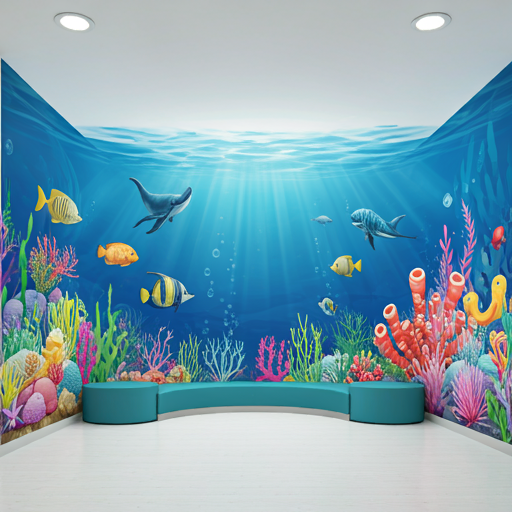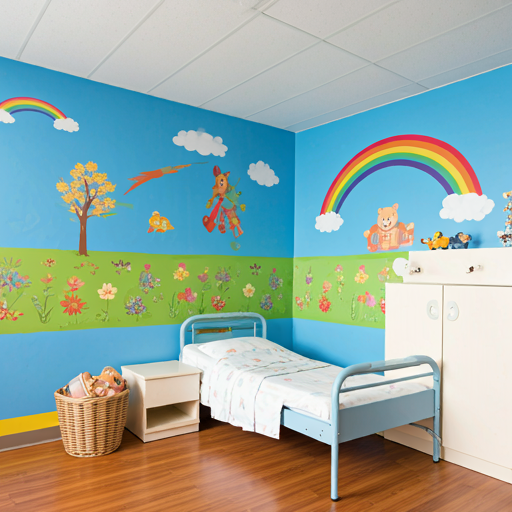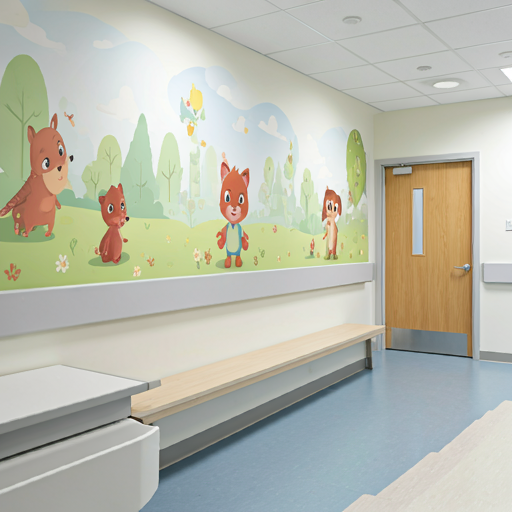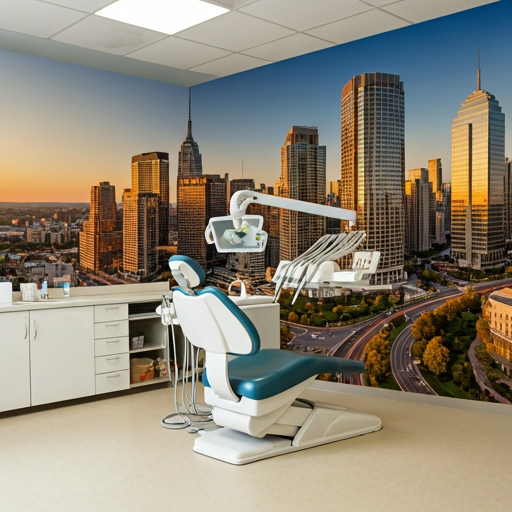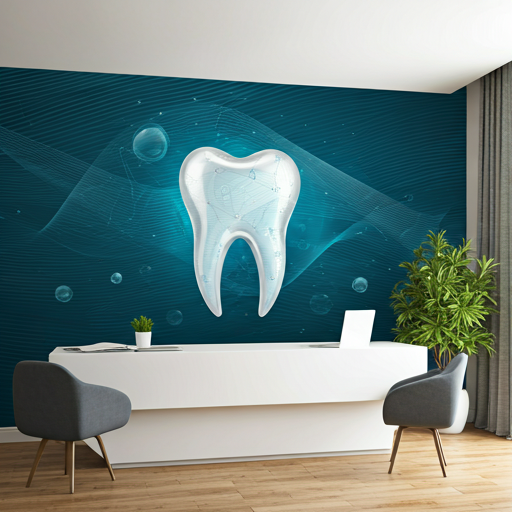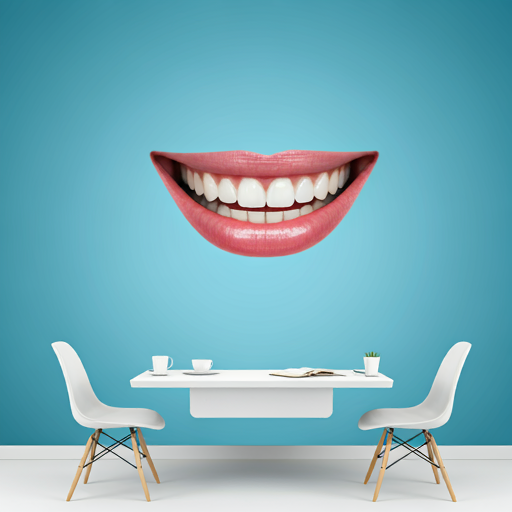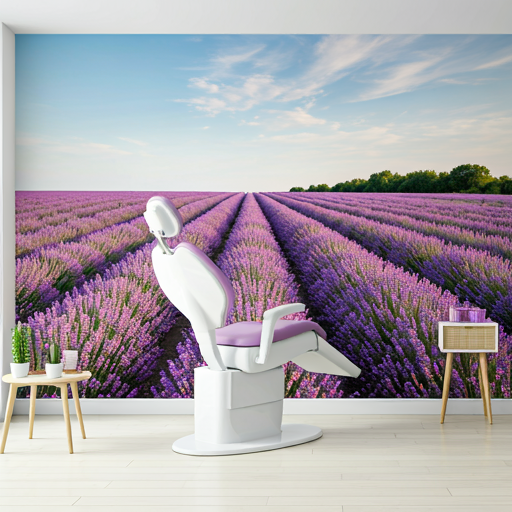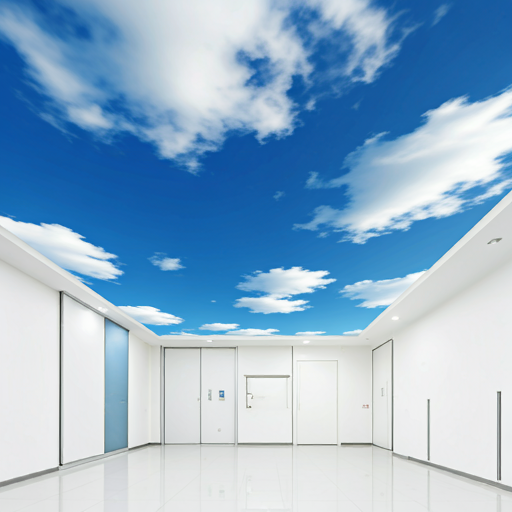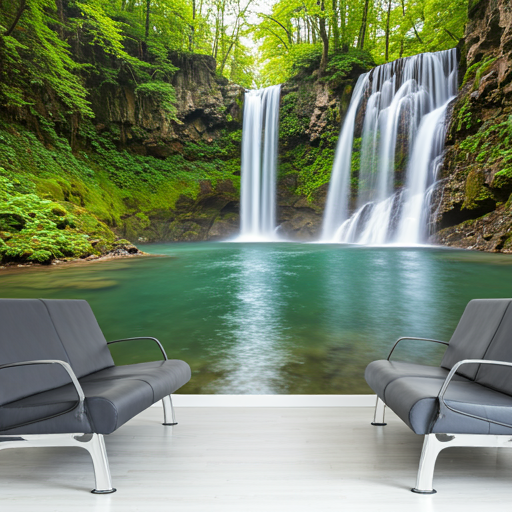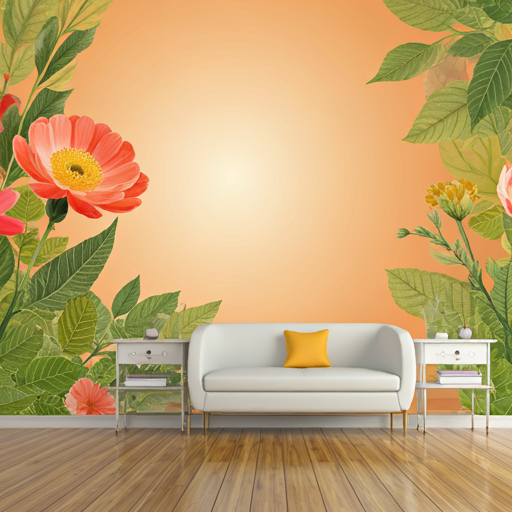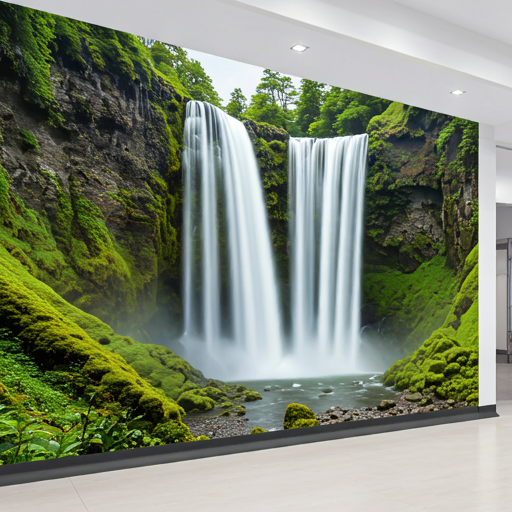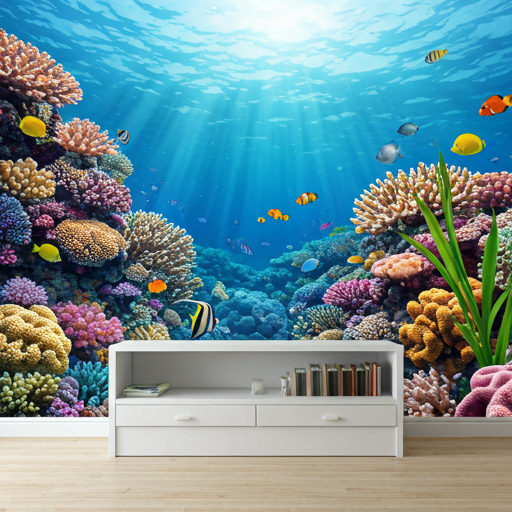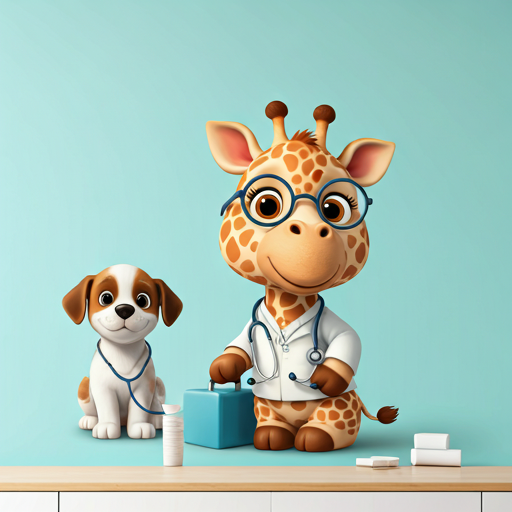Description
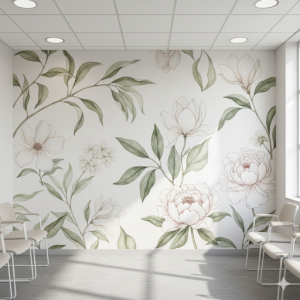
A doctor’s office wallpaper mural is a custom-printed, large-format graphic applied to the walls of a healthcare facility. It is designed with the primary and strategic goal of improving the patient experience and promoting a healing environment while meeting stringent commercial and hygiene standards.
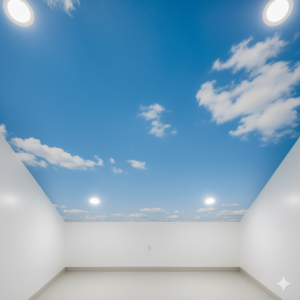
It transcends simple decoration, functioning as an evidence-based design tool in a clinical setting.
A doctor’s office wallpaper mural is a high-quality, commercial-grade wallcovering featuring bespoke imagery—often nature scenes, soothing abstracts, or engaging educational graphics—that is custom-sized for the specific space (waiting rooms, exam rooms, corridors, or ceilings).
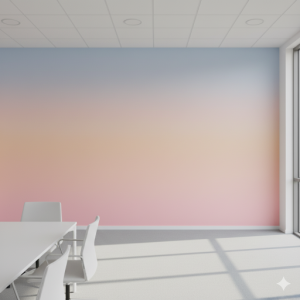
Its definition is distinguished by the following three strategic pillars:
1. The purpose of a doctor’s office wallpaper
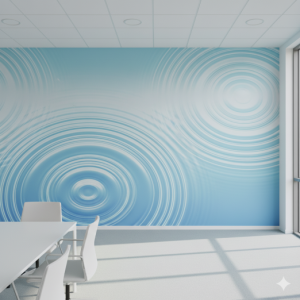
The core function of the mural is not aesthetic, but therapeutic and behavioral:
Doctor’s office wallpaper for anxiety reduction
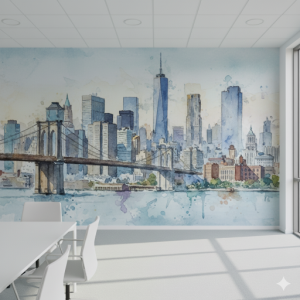
Murals featuring calming, representational nature scenes (biophilic design) are scientifically proven to reduce patient stress, lower blood pressure, and ease anxiety associated with medical visits.
The primary purpose is anxiety reduction through the application of biophilic design. Viewing this artwork helps to significantly reduce stress, lower blood pressure, and ease the anxiety and apprehension associated with medical visits, fear of diagnosis, or impending procedures.
By offering a visual escape, these images promote a sense of serenity and well-being. And making the overall clinical environment feel more welcoming and less intimidating for patients of all ages.
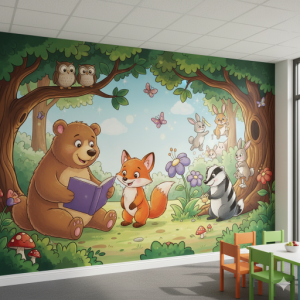
Positive Distraction
Particularly in high-stress areas like pediatric wings, treatment areas, or dental operatories, the visual complexity of the mural serves as a focal point to distract patients from discomfort, worry, or perceived pain.
Creating trust with a doctor’s office wallpaper mural
A doctor’s office wallpaper mural transforms the traditionally cold, sterile, and intimidating “white wall” environment into a warm, welcoming space. Thus establishing a sense of care and professionalism.
Wayfinding
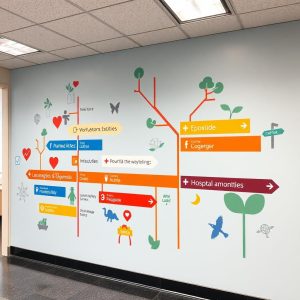
In large clinics or hospitals, themed murals or color-coded corridors can be used as intuitive visual cues to help patients navigate the facility.
2. Doctor’s office wallpaper design, content, and psychology
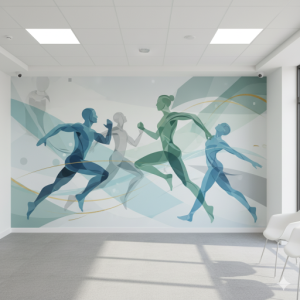
The visual design is highly deliberate, avoiding controversial or overly abstract art:
Preferred themes of a doctor’s office wallpaper mural
Themes for doctor’s office wallpaper murals almost always prioritize representational nature scenes (biophilic design). Because they are universally understood and have a measurable, positive physiological effect on viewers. The goal is to reduce patient anxiety and stress by providing a visual escape from the clinical setting.
Popular imagery includes misty forests, calm ocean horizons, flowing water, and serene mountain vistas. In pediatrics, where distraction is key, themes shift to engaging, non-threatening worlds like brightly coloured and friendly animals, whimsical space scenes, or animated under-the-sea adventures to spark curiosity and keep young minds occupied during long waits or uncomfortable procedures.
Color Palette
Murals typically utilize soft, cool colors because of their powerful psychological links to positive emotional states in a healthcare context. Blues are foundational, promoting a sense of calmness, reliability, and tranquility. Greens are equally vital, symbolizing balance, nature, and healing, which helps reduce mental fatigue and stress.
These colors, often implemented as gentle gradients or watercolor washes, are contrasted with light, neutral tones (like soft beige or off-white) rather than harsh white. This palette strategy helps to counteract the fear and unease often associated with sterile environments, creating a more nurturing and composed atmosphere for patients.
Brand Integration
While the primary focus is patient comfort, the mural often serves as a subtle yet effective tool for brand integration and establishing trust. This is achieved by carefully incorporating the clinic’s official brand colors into the landscape or abstract design’s overall scheme.
For instance, a dental office with a yellow accent color might have sun rays in the nature mural rendered in a soft golden hue. Additionally, a refined version of the clinic’s logo or key icon may be subtly placed—perhaps etched faintly into the background. Or placed minimally in the corner of the mural. This approach promotes internal unity among staff and reinforces a professional, cohesive external recognition of the practice’s identity.
3. Doctor’s office wallpaper technical requirements (commercial grade)
For use in a medical setting, the material quality must meet strict regulatory and practical demands:
Commercial Durability
The material must be heavy-duty to withstand the rigorous demands of a clinical environment. This typically means choosing Type II commercial-grade vinyl or similar robust materials like silk-vinyl. This grading ensures the wallcovering is significantly resistant to abrasion, scuffs, and tearing from high-traffic movement, wheelchairs, equipment carts, and frequent physical contact. Investing in this durability protects the aesthetic investment and reduces the need for costly replacements or frequent repairs. Ensuring the mural remains intact and professional-looking for its entire service life.
Hygiene and Cleanability
Maintaining impeccable hygiene is non-negotiable in a doctor’s office, making the mural’s surface crucial. The material must be easily washable and scrubbable with hospital-grade cleaning solutions and strong sanitizing agents without experiencing damage, fading, or color transfer. Unlike standard wallpaper, the commercial surface must be non-porous and moisture-resistant to prevent the absorption of liquids and stains. This guarantees that the wallcovering can be routinely wiped down and sterilized to uphold the highest levels of infection control. And cleanliness standards as required in a medical setting.
Safety Compliance
Strict regulatory adherence is mandatory for healthcare facilities. The material must be fire-rated (most often achieving a Class A flame spread rating) to comply with stringent safety codes for public and commercial buildings.
Furthermore, advanced options often include a protective MicroBloc® antimicrobial topcoat. This critical feature inhibits the growth of surface bacteria, mold, and fungi, which helps control odors and prevent discoloration. By combining certified fire resistance with antimicrobial properties, the mural actively contributes to both the physical safety and biological safety of the clinical environment.
Environmental Safety
Modern healthcare design increasingly prioritizes creating a healthy indoor environment. Preference is given to eco-friendly options such as PVC-free wallcoverings and those printed using low-VOC (Volatile Organic Compounds) inks. This focus on non-toxic materials is essential to maintain high indoor air quality, especially crucial for vulnerable populations like the sick and elderly. Or pediatric patients who may have compromised respiratory systems. Choosing sustainable, low-emission materials ensures the mural contributes to patient comfort without introducing harmful chemicals. And aligns the office’s wallpaper design with a commitment to overall patient well-being.

